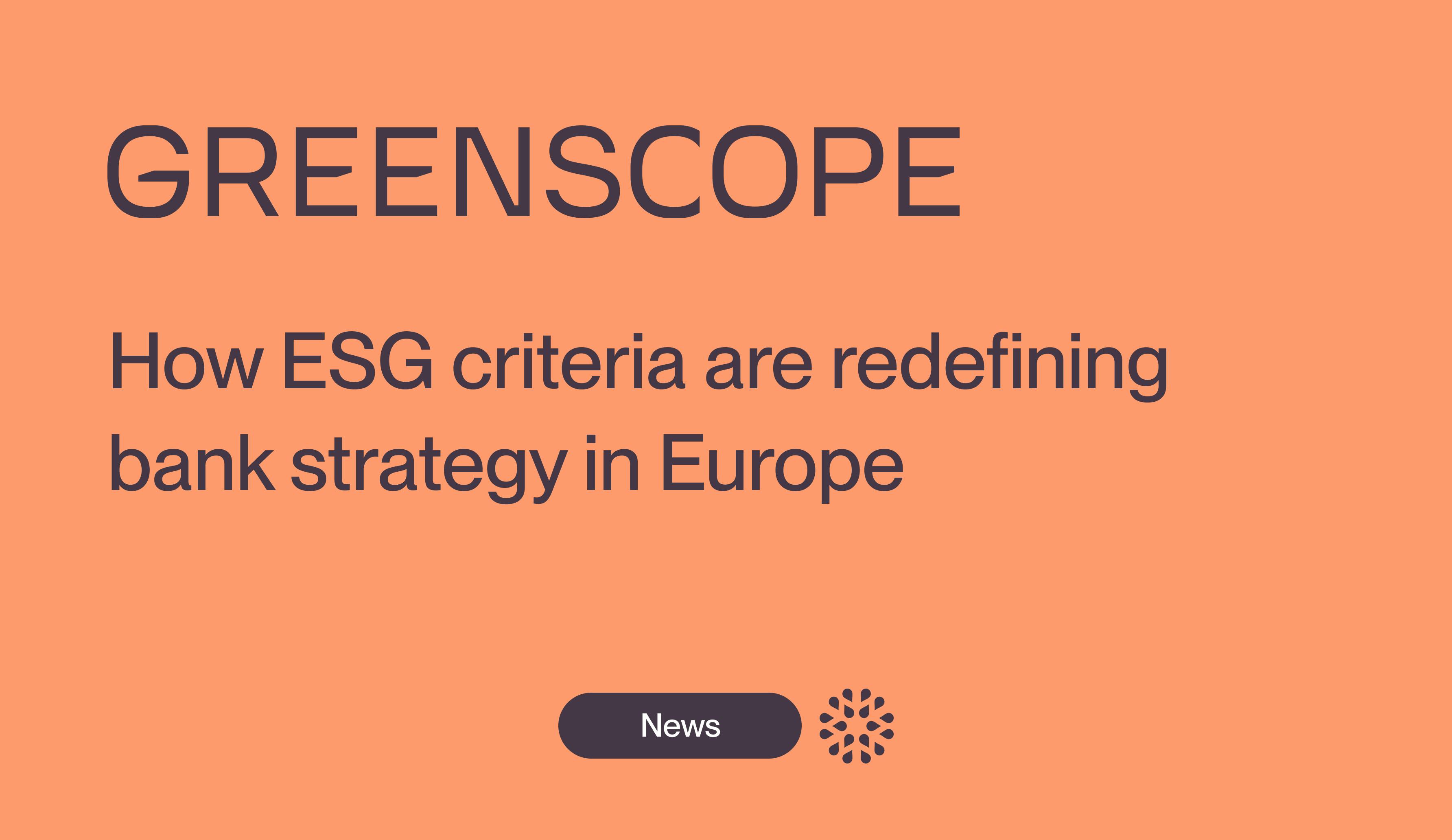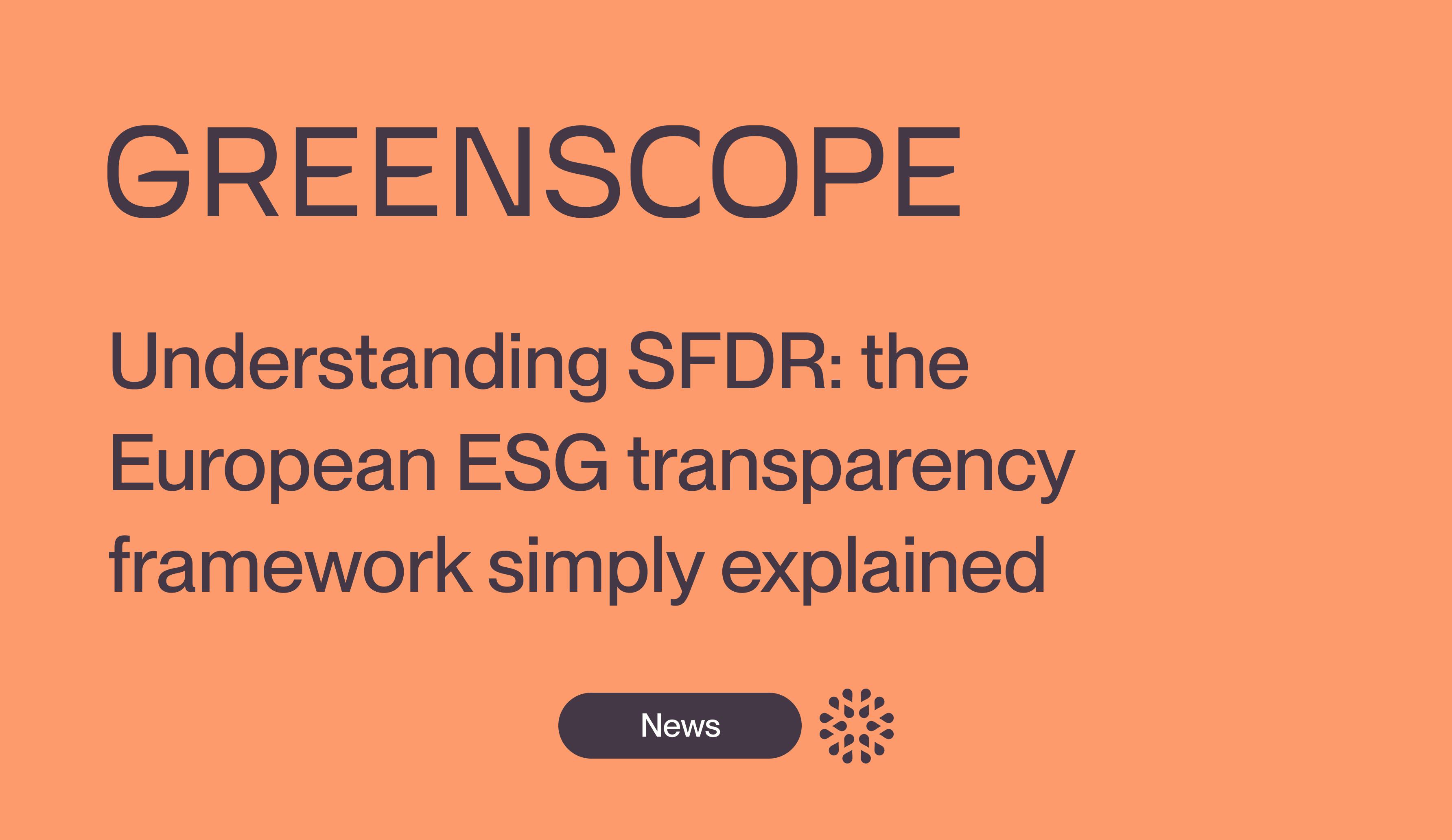How ESG criteria are redefining banking strategy in Europe
Regulatory pressure, stress tests, demanding clients: ESG is no longer a bonus—it's the new banking standard.

As environmental, social, and governance (ESG) risks reshape strategic priorities in the banking sector, the European Banking Authority (EBA) published its final guidelines on ESG risk management on January 9, 2025. These guidelines require financial institutions to identify, measure, manage, and monitor these risks by developing clear and structured transition plans to ensure their resilience in the short, medium, and long term. At the same time, the 8th prospective risk mapping by France Assureurs highlights that climate change and cyberattacks are now seen as the main threats to the insurance sector, and thus to the entire financial system. This study, conducted with 232 experts from 38 insurance and reinsurance companies, highlights the growing impact of these risks on financial stability and the need for banks to adapt their strategies accordingly.
In response to these developments, banks are required to proactively integrate ESG considerations into their governance and risk management processes to strengthen resilience and contribute to financial system stability in a rapidly changing environment.
Definition and importance of ESG criteria for banks
The integration of ESG criteria (environmental, social, and governance) has become an essential pillar for banks, both in risk management and in the development of new business opportunities. This shift addresses a dual requirement: better anticipating risks and meeting the growing demand for more responsible financial solutions. Here are some key aspects of the importance of ESG criteria for banks:
- Risk mitigation: Integrating ESG criteria enables banks to better assess and anticipate risks related to the energy transition and climate change. By identifying sectors or companies vulnerable to these risks, banks can redirect their funding toward more sustainable and resilient activities, thus minimizing their exposure to "high emitters" or potentially impacted assets subject to upcoming stringent regulations
- Development of tailored offerings for "ESG profile" clients: The growing demand for products and services aligned with ESG values is driving banks to create custom financing solutions. These offerings target clients looking to invest in responsible projects or companies, from green investment funds and "green" loans to savings products based on social and environmental criteria. This development allows banks to differentiate themselves in a highly competitive market
- Better customer insight through ESG data collection: By analyzing clients' sustainability reports or gathering specific ESG data, banks can obtain a more complete and accurate view of their clients’ business practices. This approach allows for improved assessment of ESG risk management within client companies, strengthens relationships with them, and enables banks to offer solutions better tailored to their sustainability strategies
- Strengthening resilience and competitiveness: Proactive ESG risk management helps banks better prepare for climate stress tests and future systemic crises. It enables them to maintain financial strength during economic upheaval while responding to investor demand for sustainable and responsible strategies
- Accelerating innovation and transparency: ESG drives banks to adopt innovative technological tools such as ESG performance tracking platforms, data analysis algorithms, or smart contracts based on environmental and social criteria. Additionally, ESG reporting requirements increase transparency and accountability, strengthening the trust of investors, regulators, and clients
- Adapting to evolving regulations : With the rise of European regulation (such as the SFDR or the EU Taxonomy), banks must integrate ESG criteria into their strategies to ensure compliance. These regulations impose not only reporting obligations, but also requirements for risk management related to climate and sustainability. Anticipating these changes allows banks to position themselves as responsible players and better meet stakeholder expectations
Impact of ESG criteria on bank decision-making
Broader criteria for risk assessment
The integration of ESG criteria into banks’ decision-making processes is fundamentally transforming how they evaluate risks and opportunities. Now, financial institutions no longer simply assess a company's financial solidity before granting credit or financing—they also scrutinize its performance in environmental, social, and governance matters.
Banks assess the ESG exposure of their clients to anticipate what are called "non-traditional" risks, which are increasingly material: physical risks related to climate change (floods, droughts, etc.), transition risks (regulatory changes, carbon taxes), reputational risks (linked to social or environmental scandals), and legal risks (environmental litigation, class actions, etc.).
A direct impact on lending terms
Greater transparency directly influences banks’ lending decisions. Companies adopting responsible practices in line with ESG criteria improve their risk profile and gain better access to credit, often under more favorable conditions.
A notable example is Groupe Bel, which in 2022 closed a €315 million "Sustainability-Linked Schuldschein Loan." The lending terms are indexed to objectives such as reducing greenhouse gas emissions, developing carbon assessments for milk producers, and improving the nutritional quality of their products.
Evolving banking practices
This transformation leads banks to offer new products, such as loans linked to ESG performance (sustainability-linked loans), green bonds, or impact credit lines.
ESG criteria are also shaping sector policies: some banks now exclude funding for projects related to unconventional fossil fuels, deforestation, or serious human rights violations. Others choose to support their clients through the transition by setting progress milestones.
Regulatory pressure as a driver of change
Finally, this dynamic is amplified by growing regulatory and societal pressure. Regulations such as the European taxonomy or ECB climate risk guidelines require banks to publish precise data on how their portfolios align with climate and social goals.
In this context, funding decisions become strategic: they determine not only risk and profitability, but also the image, compliance, and long-term sustainability of banks.
Regulations and obligations related to ESG criteria in the banking sector
The European Green Taxonomy
Adopted in 2020 as part of the sustainable finance action plan, the European Union's green taxonomy is a classification system for economic activities considered environmentally sustainable. It sets out precise technical criteria for determining whether an activity makes a substantial contribution to at least one of the EU's six environmental objectives without harming the others.
For banks, this regulation means a major transformation: they must now assess the degree to which their loan portfolios align with this taxonomy, using a key indicator—the Green Asset Ratio (GAR). This ratio measures the share of banking assets that finance "green" activities as defined by the regulation.
SFDR
The Sustainable Finance Disclosure Regulation (SFDR) has been in effect since March 2021. It requires financial market participants—banks, asset managers, insurers—to publish detailed information on how they integrate ESG risks and impacts into their investment decisions.
Financial products must be classified into three categories:
- Article 6: Products without ESG integration
- Article 8: Products promoting ESG characteristics
- Article 9: Products with a sustainable investment objective
For banks, this means not only increased transparency for clients and investors, but also the necessity to structure their financial offerings around robust sustainability criteria, at risk of exclusion from certain markets or facing accusations of greenwashing.
CSRD
The Corporate Sustainability Reporting Directive (CSRD) may significantly broaden the scope of companies subject to non-financial reporting. It mandates the use of European standards (ESRS) aligned with the objectives of the European Green Deal.
For banks, the CSRD plays a dual role:
- They must publish their own ESG performance in a standardized and auditable fashion
- They must incorporate clients’ non-financial data into credit risk analysis, portfolio management, and investment decisions
This reinforces their role as a bridge between financial regulation and sustainable transition.
Climate stress tests
The European Central Bank (ECB) has since 2021 introduced climate stress tests to assess banks’ vulnerability to climate change-related risks. These tests model the long-term effects of two risk types:
- Physical risks (natural disasters, droughts, floods, etc.)
- Transition risks (rising carbon prices, new regulations, technological change)
The results have revealed that many financial institutions still lack sufficient data or robust models. This has prompted the ECB to stiffen its requirements for ESG governance and climate resilience strategies.
EBA Guidelines: Integrating ESG Risks Into Bank Management
The European Banking Authority (EBA) published guidelines in 2022 on how institutions should integrate ESG risks into risk management, governance, and supervision. These requirements fall within the Basel III prudential framework (notably Pillar 2) and apply to:
- ESG credit risk management
- Long-term risk assessment
- Adjustment of internal rating models
The aim is to harmonize practices across Europe and prevent some banks from lagging in structurally integrating ESG issues.
Article 29 of the Energy-Climate Law: A French Specificity
In addition to the European framework, France introduced specific requirements under Article 29 of the Energy-Climate Law. This obliges French financial institutions—including banks—to publish an annual report on how they take into account climate and biodiversity risks in their investment strategies.
This report must include:
- Climate scenario analysis
- Portfolio carbon footprint
- Alignment goals with the Paris Agreement
Sources
Our Latest Articles

EDCI - Understanding the ESG Data Convergence Initiative to harmonize ESG reporting in Private Equity
Simplify and standardize your ESG data with EDCI.

Understanding SFDR: The European ESG transparency framework made simple
Understanding SFDR means understanding what structures sustainable finance in Europe. Requirements, tools, impacts: let's break it down.

CSR News - November 2025
Discover key developments: ongoing projects, standards updates, new official documents.

Comparison of ESG rating agencies: role, methodology, and key players
ESG ratings now shape investment decisions. Learn how extra-financial rating agencies assess sustainability-related issues.



